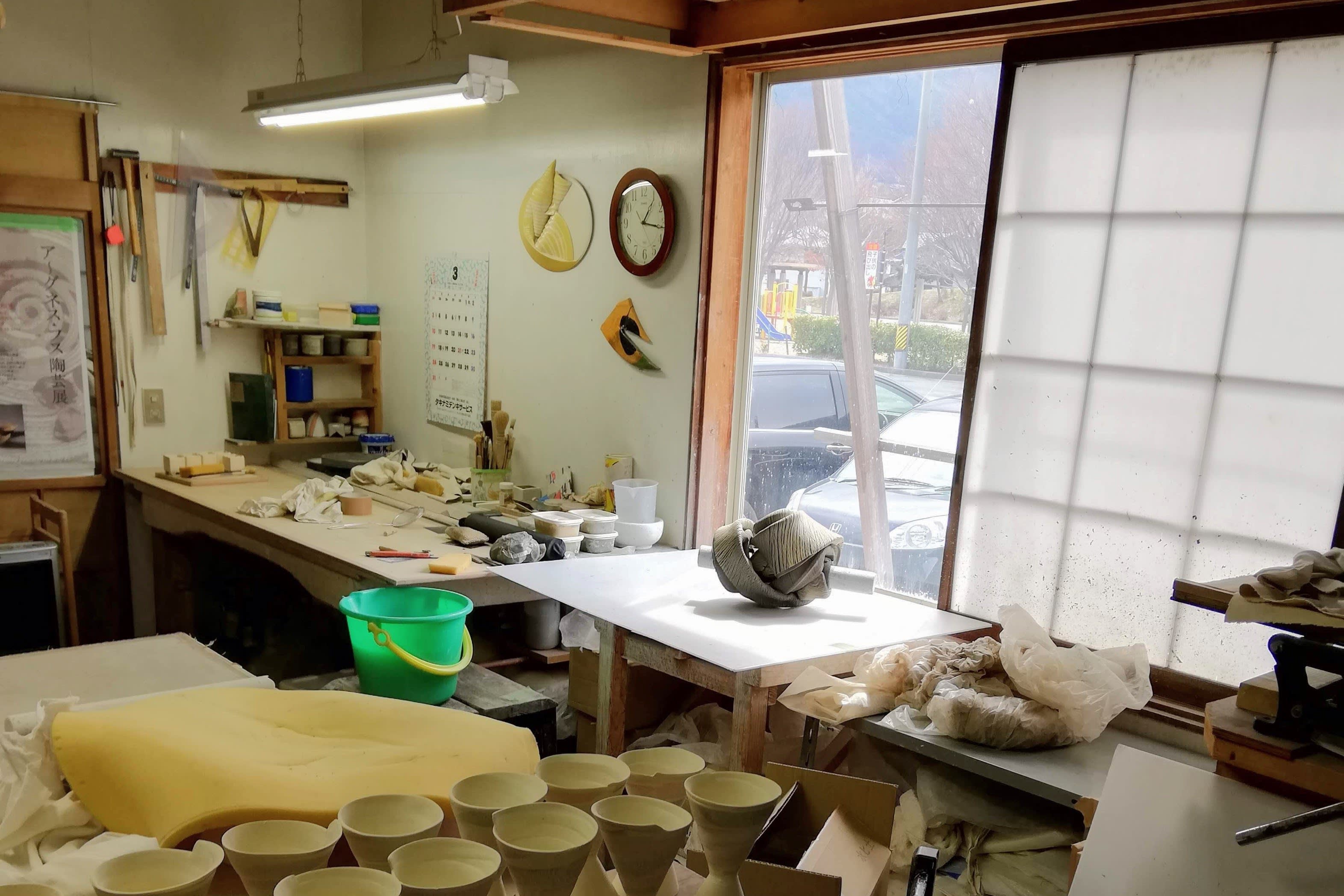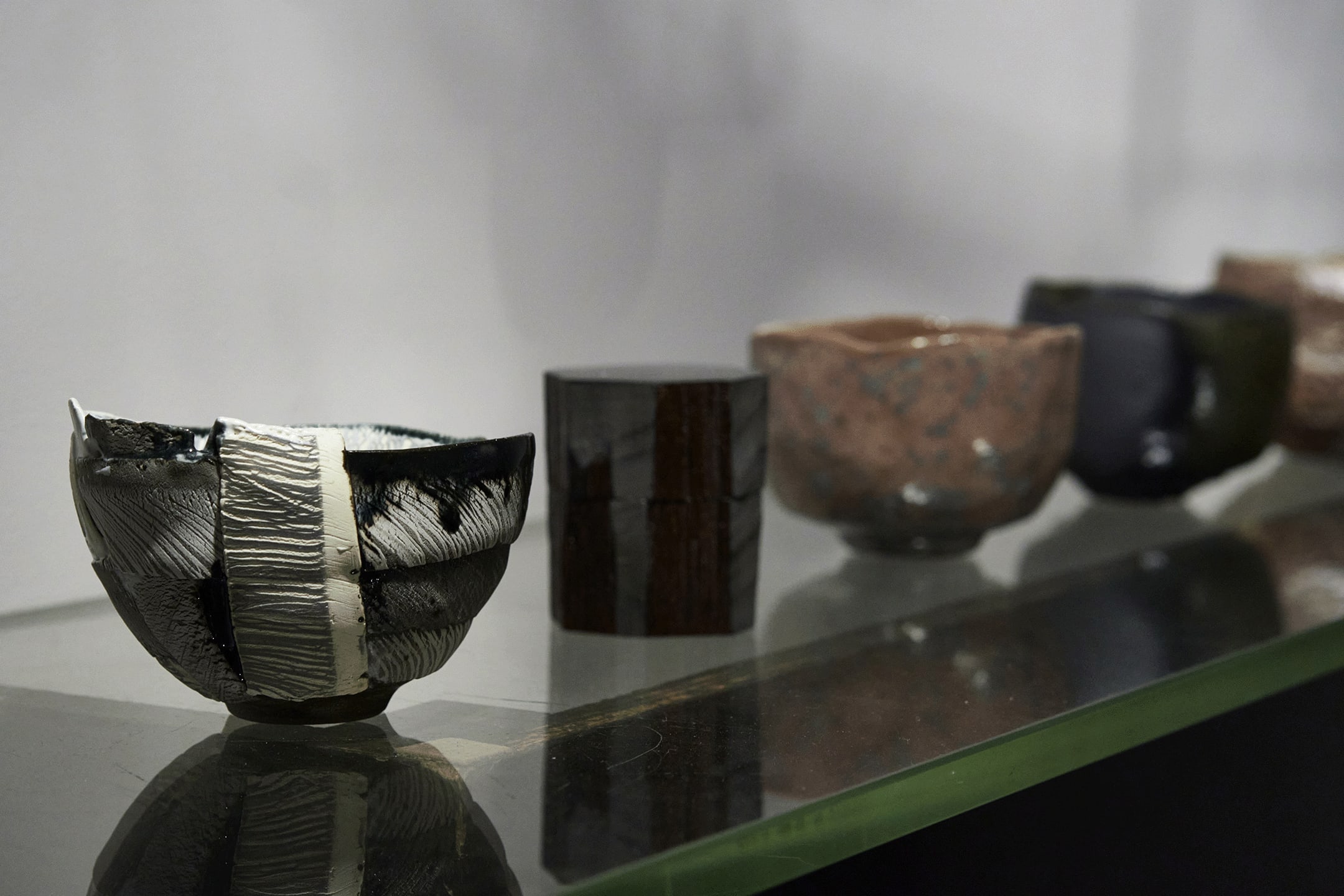
A ceramic artist living in Japan since 1993, Husz has developed a very unique way of making that is reminiscent of textiles. The basic element of each piece is very similar to traditional Japanese textile methods, specifically the sash that serves as a belt for kimono called obi; which she recreates as long flat stripes stretched from clay by hand. This is how she makes small and large objects, even tea bowls, and is an immediately recognizable characteristic of Husz's work.
Husz responded to four questions that investigate her ceramic practice and relationship to the tea ceremony. Her Duality Tea Bowls are on view now joining Magic of the Tea Bowl at Ippodo Gallery, 32 E. 67th St., 3rd Floor.

Agnes Husz, Duality Tea-Bowl (4) - 強制茶碗, (C25911)
Hungarian born Agnes Husz has received the chawan tradition during her three decades working as a ceramicist in Japan. Her rustic, spiraling designs are styled from cut slabs of clay, which coil and converge in twisting abstract patterns.
Question 1:
Do you practice tea in daily life? Please share your chanoyu routine, or a beloved memory of chanoyu.
Husz:
I fell in love with Chanoyu on my very first visit to Japan.
I immersed myself in the beautiful nature and wabi-sabi world of Japan, which can be felt everywhere; climbing up a mountain or on the side of the road, where you may suddenly encounter a rock or a tree decorated with characteristic rope and white paper.
This transcendental world of tea ceremonies, in its pure simplicity, contains much more power than the world that flaunts its wealth. The intimate relationship that is built between us and the universe in the tea ritual is an enhanced spiritual atmosphere where we can experience ourselves and discover the opportunity for understanding, acceptance, and love.

The studio of Agnes Husz (2023)
Q2:
Please describe the influences that inspire your work.
Husz:
In my view, the tea ceremony shares similarities with contemporary art. My primary source of inspiration lies in the present social context or the ongoing events in the world. Alternatively, it can involve brainstorming around a specific theme or considering the current season.
 Agnes Husz, Work in Progress (2023)
Agnes Husz, Work in Progress (2023)

Agnes Husz, Duality Tea-bowl (6) - 強制茶碗, (C25913)

Agnes Husz, Duality Tea-bowl (6) - 強制茶碗 in installation, (C25913)
Q3:
Please describe the qualities do you most treasure in a tea bowl—be that shape, color, texture, or history, style, and type of clay?
Husz:
I prioritize applying my concept in the design process, considering all elements, such as the tea bowl's color, shape, texture, size, and weight.
Beginning with the color, I shape the bowl from the foot while envisioning the final chawan, allowing my body to instinctively guide the rest.
 Agnes Husz, Work in Progress (2023)
Agnes Husz, Work in Progress (2023)
Q4:
Please share with us how you prepare to make a new piece; how do you decide on the materials and direction for the idea?
Husz:
I embrace and incorporate a state of 無 (mu), that is, 'emptiness' as my initial approach to the creative process.

Agnes Husz, Duality Tea-Bowl (5) - 強制茶碗 (Underside), (C25912)
Agnes Husz's contemporary tea bowls bring a unique flavor and perspective to Magic of the Tea Bowl vol. III, on view now at Ippodo Gallery NY until July 13. Please visit and experience Husz's wabi-sabi meets western technique chawan for yourself!
